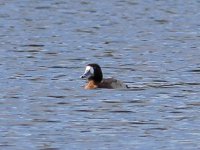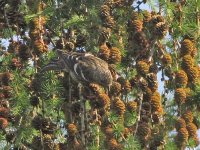Stratton Birder
Well-known member
Does anyone have any thoughts or photographs in regards to the recent female Scaup on Ormesby Little Broad? I went to have another look at this bird today and the conditions could not have been more perfect with the sun shining onto the ducks and the water being completely flat and calm. However, upon scoping what I expected to be the same pure Scaup which I thought I had observed eight days previous, instead I found myself looking at what looked to be an impure bird. It had plenty of white at the base of the bill but with a slight peak at the top of the crown and an obvious contrast between the pale flanks and darker back. The bill didn't look quite right either and it was the same size as the Tufteds. I'm tempted to write off my previous sighting on the assumption that this is the same bird but wonder what other birders who have been on site think. The two bird theory may be unlikely on this occasion, but at the time, a few days previous, I was certain I was looking at a very nice female Scaup although the conditions were not as favourable then as they were today. Would appreciate any comments.
Steve.
Steve.















